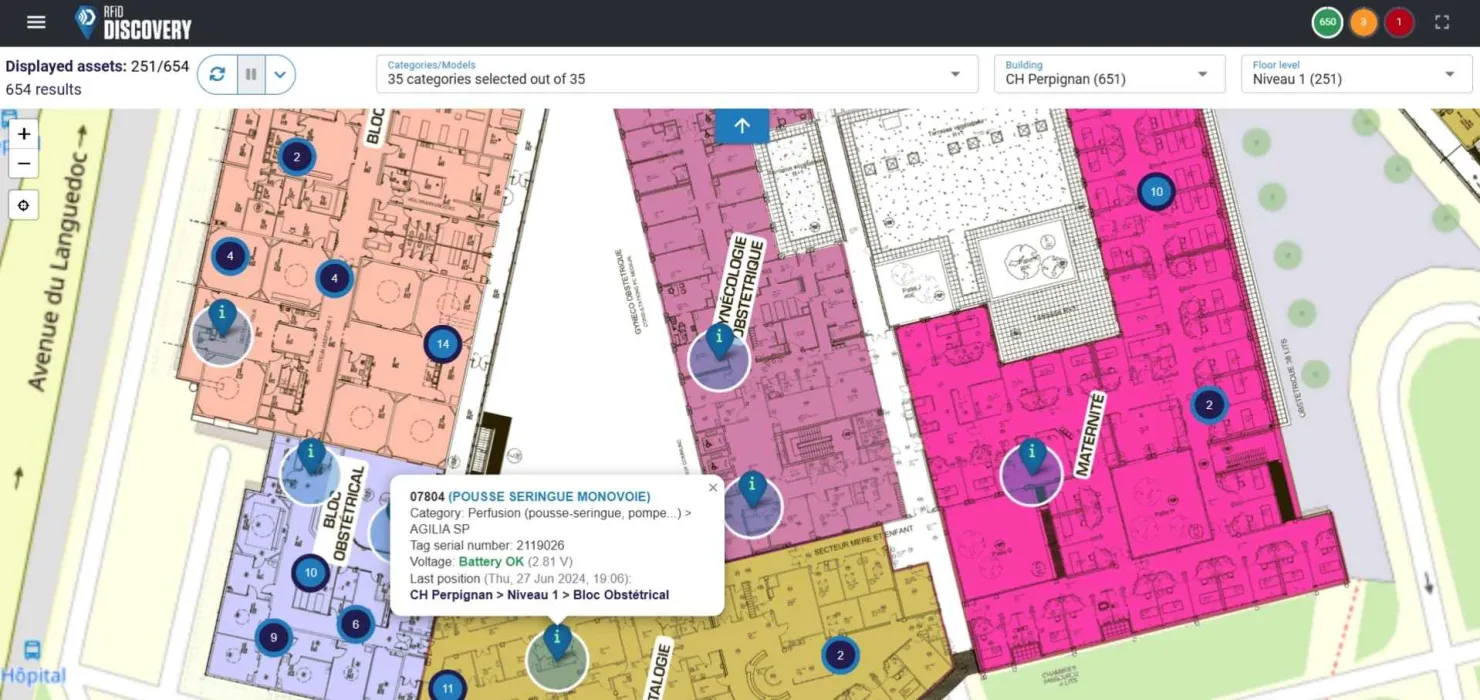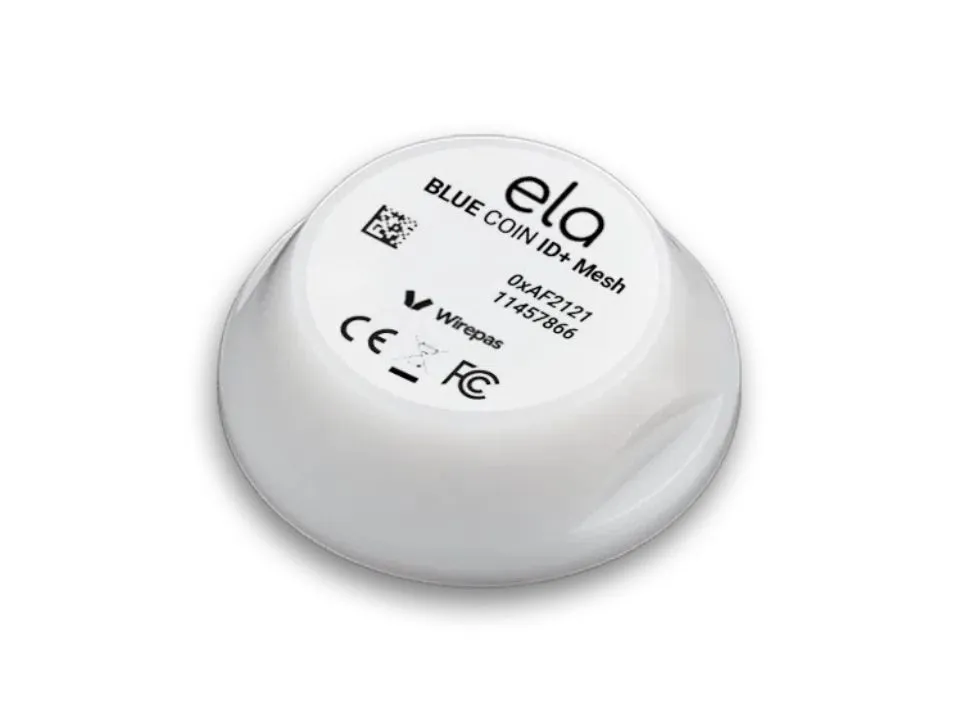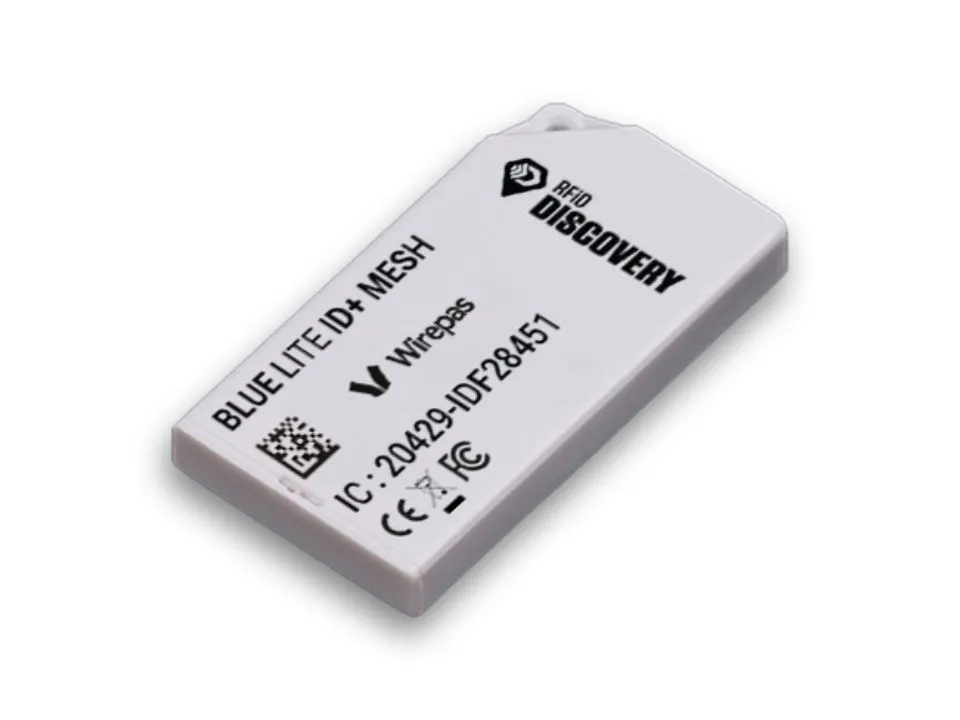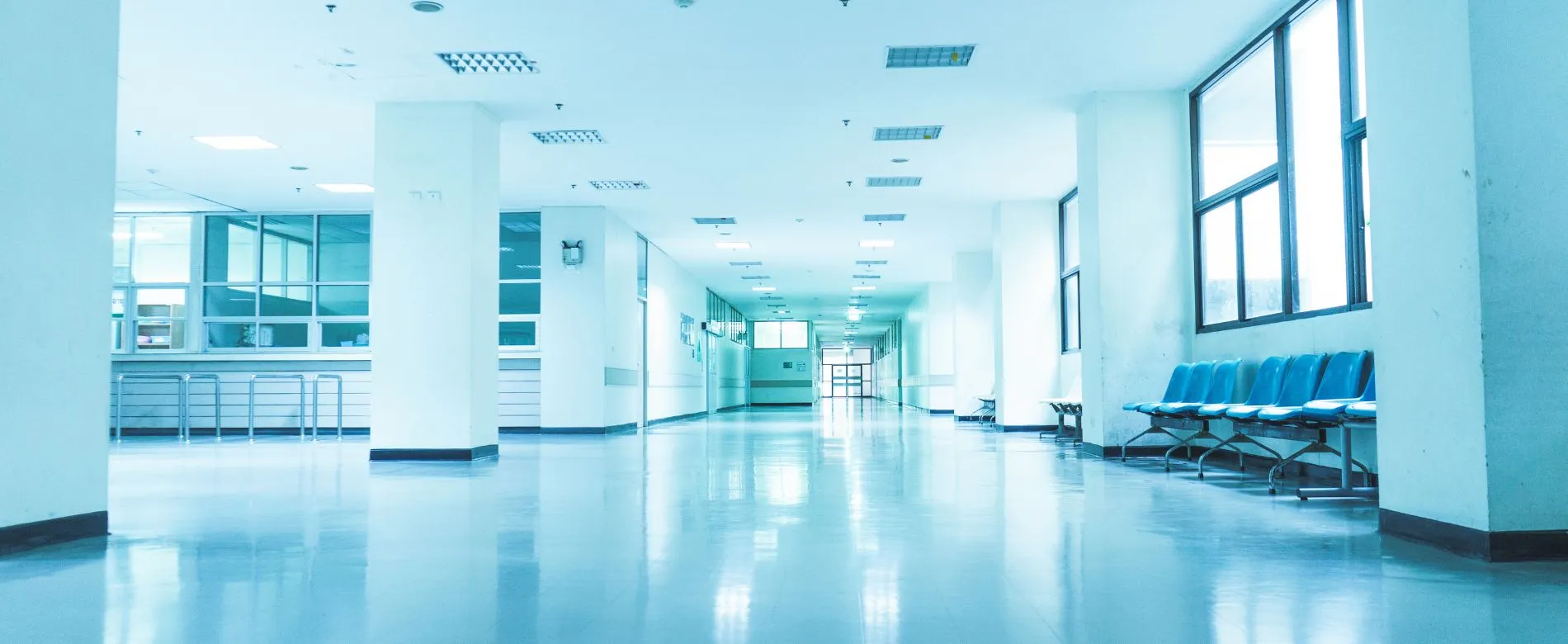BLE tracking helps Perpignan Hospital improve management of medical devices
Founded in 1116, the Centre Hospitalier in Perpignan is among the oldest healthcare institutions in the region. With more than 4,600 staff members, it is the leading public health provider in the Pyrénées-Orientales area, and ranks third in the region in terms of service volume. The hospital’s main mission is to provide a range of diagnostic and medical care services.
The challenges
To enhance operational efficiency, the Centre Hospitalier needed a robust system to monitor the location of infusion pumps and electrical beds, both of which are critical for daily operations. These assets are also among the most frequently moved within the hospital. Real-time visibility was therefore essential to reduce search times, optimise utilisation levels, and ensure timely maintenance. In addition, the ability to quickly locate misplaced items and return borrowed devices to its respective department was vital.
The main challenge was to accurately track these medical devices in real time across the hospital’s 75,000 square metres of floor area on five levels. Staff members often needed to locate equipment, but manual searches were time-consuming and delayed patient care.
The hospital wanted a system that was easy to implement, didn’t require connection to power supplies, and required minimal ongoing maintenance.
The solution
RFiD Discovery designed and implemented a tracking solution, specifically tailored to address the needs of the Centre Hospitalier in Perpignan.
Following an in-depth analysis, Bluetooth Low Energy (BLE) technology, using the Wirepas protocol, was chosen for real-time indoor tracking due to its advantages, including a location accuracy of around 3 metres and ease of implementation.
The design of the system ensures low power consumption, with tag batteries lasting around five years, minimising maintenance requirements. The implementation included fitting each bed and infusion pump with a BLE tag. In addition, 719 BlueUp mesh anchors were installed across the hospital’s five floors, providing full coverage of key areas to optimise equipment management.

How does it work?
The system works by creating a comprehensive mesh network of BLE tags and anchors. Each item to be tracked is fitted with an active BLE tag, which transmits its unique ID at pre-set intervals. Tags are shock and waterproof and can withstand standard hospital cleaning processes. Batteries are changed easily, and last up to five years.

Tagged assets are detected by strategically placed anchors across the hospital. Live location data is then sent to a central database and is accessible by hospital staff via an intuitive interface which includes a map view.
This means required items can be located quickly by clinical staff to prevent potential delays to patient diagnostics or treatment and by engineering teams, enabling them to conduct timely maintenance and repairs to minimise device downtime.

The outcome
At the Centre Hospitalier the implementation of RFiD Discovery’s tracking solution led to immediate and significant improvements.
Technicians can now locate and service equipment more efficiently, reducing device downtime and enabling quicker return to use. The reduction in equipment loss and misplacement has enhanced overall resource utilisation across the hospital. The system also facilitates smooth equipment transfers between departments, allowing healthcare staff to quickly return devices that do not belong to their unit.
In addition, the solution has proved valuable for biomedical engineers, who can now monitor equipment usage more effectively and make better-informed decisions about future procurement.
Key Benefits:
- Real-time visibility of assets
- Fast and easy implementation
- Increased asset utilisation
- Reduced equipment loss
- Improved patient care



